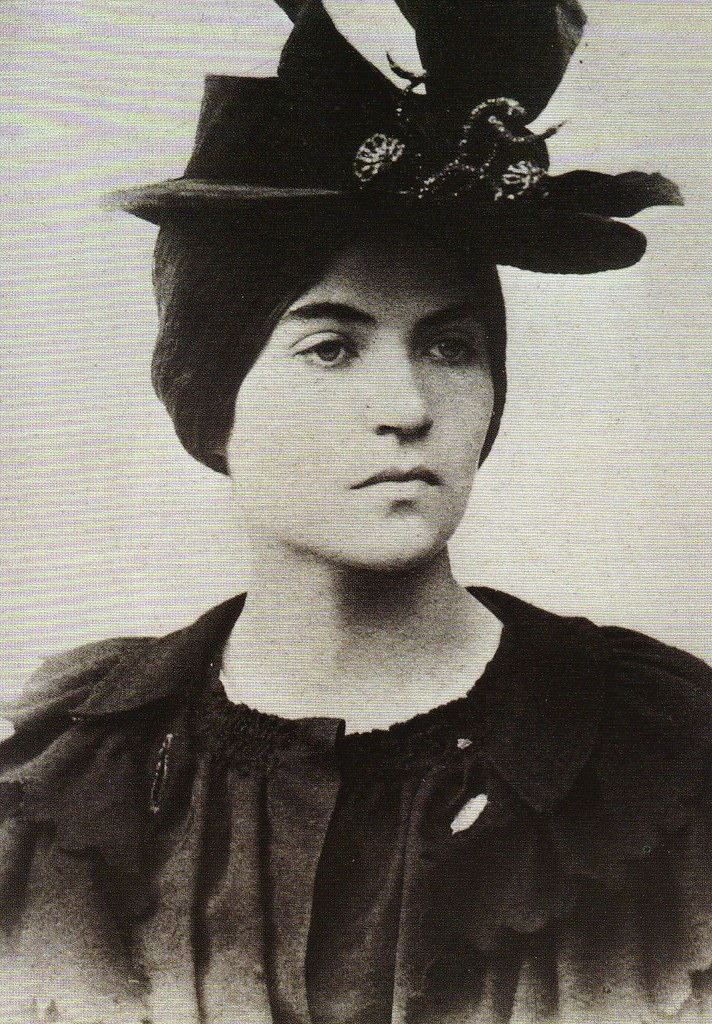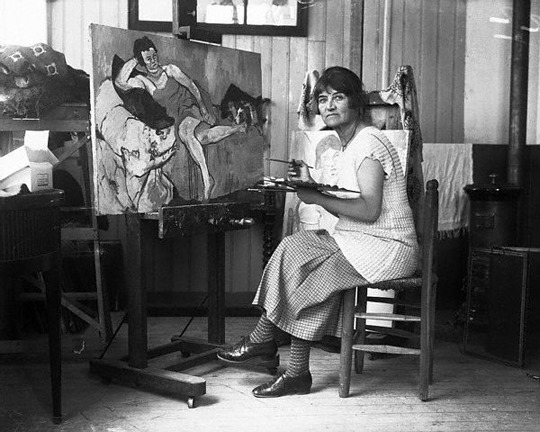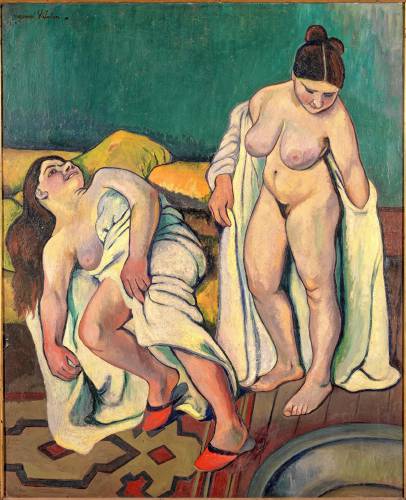Misplaced by History–Artists Worth Knowing:
Suzanne Valadon
Suzanne Valadon (1865-1938) was groundbreaking French painter who lived and worked according to her own rules. Living at the epicenter of artistic Paris, she was a model and friend to some of the most famous artists of her generation. Her paintings of women were based on real emotions and actual physical experience, and she inspired women to look and think for themselves when such behavior was not supported.
Valadon was born near Limoges in 1865, her mother a laundress and her father unknown. As a teenager she worked as an acrobat in a circus, but when she was 16 years old, she suffered a fall. She left the circus and worked as a model for some of the most prominent artists of the time, including Toulouse-Lautrec and Auguste Renoir.
As an artists’ model, Valadon became an active member of the artistic community of Montmartre. Her personal life was colorful: Renoir was only one among a number of painters with whom she had affairs. In 1883, at age 18, Valadon gave birth on to an illegitimate son, Maurice Utrillo, who later became a renowned painter. Valadon herself seemed uncertain as to who the father of her child was.
Valadon’s first known work, a pastel Self-Portrait, dates from 1883. During the mid-to late-1880s, Valadon produced many drawings and pastels of people and of street scenes. Her artistic endeavors were assisted by Toulouse-Lautrec, for whom she often modeled and had a lengthy affair. Valadon worked to hone her skills by observing the techniques of the artists who painted her, becoming a fully self-taught artist over the years.
In 1890 she became friends with painter Edgar Degas who admired and purchased her work. Degas encouraged her efforts to become an artist and helped get her career started. In 1894 Valadon became the first woman to show at the Société Nationale des Beaux-Arts, a major artistic achievement.
After a turbulent romantic life, Valadon married a stockbroker who provided financial stability and allowed her to dedicate herself to drawing and painting full time.
Valadon is particularly known for her female nudes. She was among the first women to build an extensive body of work in this field, challenging the conventional portrayal of women by contemporary male artists. She placed her subjects in a living, crowded world, rather than painting them statue-like and isolated. Valadon’s unsentimental, at times edgy approach, combined with a fascination with sex and aging, allied her with Northern European Expressionists. Her unapologetic art is regarded as an art historical lynch-pin for Feminist Art.
Valadon’s home life was tumultuous. Her son Maurice began exhibiting signs of mental problems and alcoholism as a teenager, so she devoted much of her time caring for him. She encouraged him to try painting, and he soon became a successful artist in his own right. Valadon’s marriage ended in 1909 and she began a relationship with Andre Utter, an artist 20 years her junior. Valadon continued to paint and in 1911 held her first solo exhibition. Her work was acclaimed for its sensitive observation combined with bold linework and patterns. Valadon exhibited frequently in the 1920s and by the 1930’s became internationally known.
On April 7, 1938, Valadon suffered a stroke while painting at her easel. She died hours later, at the age of 72. She left over 475 paintings, nearly 275 drawings, and 31 etchings. Valadon had forged a career in a man’s world on her own terms. She had challenged the conventions of the female nude and carved a new critical space for artists to consider that genre.



